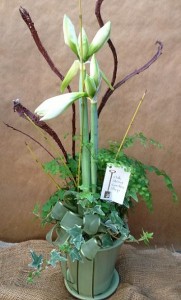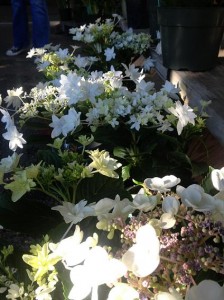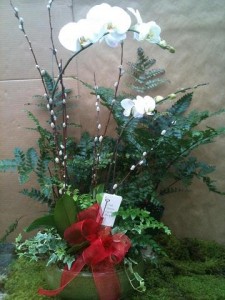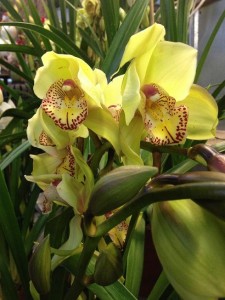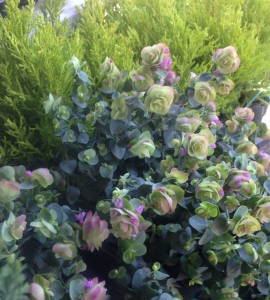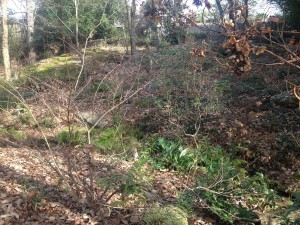
At first glance, it doesn’t look like much is going on…
It’s the day after Christmas, and I’m itching to get outside and see what’s been happening in my garden while I’ve been busy with the holidays at the shop. Leaving the house very early and getting home after dark doesn’t give a garden junkie like myself much time to play.
While gardeners in northern climes take the winter off, perusing catalogues and dreaming of a new garden season still months away, we in the south, like it or not, don’t have any real down time. But, since I seem to spend much of mine walking through the garden and simply observing and thinking about what needs doing, winter does seem a tad more relaxed.
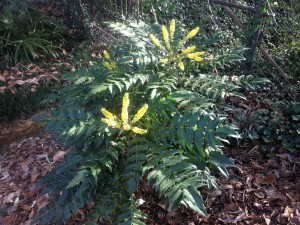
Mahonia ‘Charity’, adding it’s winter color…
For example, I’ve been thinking on and off about moving one of the shrub roses from the front bed to the side of the driveway but haven’t quite gotten past the thinking stage yet. I’ve become much more relaxed about things; everything will get done in its own time. Don’t sweat the small stuff, right?
So, let’s take a little swing around the yard and take a look at what’s happening.
I see the Mahonia x media ‘Charity’ shrub that’s planted in a very shady spot is blooming. The birds love the blue/purple berries that follow the bright yellow flowers, and we don’t see the pretty fruit for long. I cut it back quite hard last spring because it was getting leggy. It’s fuller as a result this year, and next year will have even more blooms.
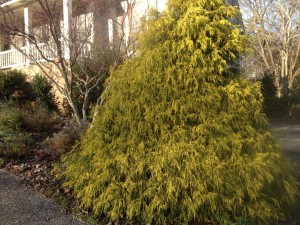
Chamaecyparis obtusa selections are wonderful for the south…
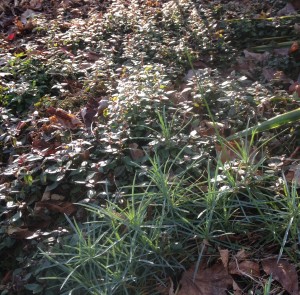
Groundcovers… Veronica ‘Georgia Blue’ and a dianthus…
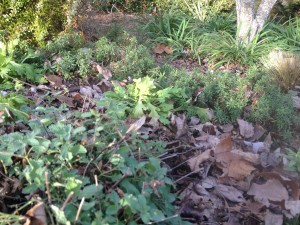
Candytuft, catmint, poppies…
Out front, the Chamaecyparis obtusa ‘Golden Mop’ calls attention to itself with some yellow brightness of its own, anchoring the end of the front bed. It has loved this hot, sunny spot, and I appreciate being able to clip it for my holiday decorations. What a beautiful workhorse in the garden! I purchased it (and most of my shrubs and trees) in small pots and have let them grow into their spaces.
More subtle things are happening out front too. The early blooming evergreen groundcover Iberis, or candytuft, is showing its buds, and some are even opening. They evidently don’t look at a calendar or gardening book to tell them when they’re supposed to be blooming!
The veronica ‘Georgia Blue’, a white pass-a-long dianthus, and poppies seem happy, as does the catmint, ‘Walker’s Low’. The veronica will be covered with tiny blue flowers in late January into February, just as the poppies begin to fatten up and the violas begin to show more color.
This bed will look much different in future weeks and months, but now, in the midst of winter, things are quiet…I must remember this is the season for patience.
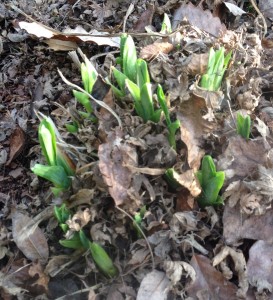
daylily foliage…
Some daylilys, though, are pushing out new green growth in this warm south facing bed; winter barely keeps them down. A large prostrate rosemary, another that loves this hot spot, is blooming pretty purply blue flowers that the bees adore.
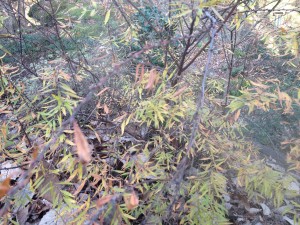
Spiraea ‘Ogon’
My route has taken me again to the back, where the Spiraea ‘Ogon’ is holding on to its few remaining willowy leaves, and, looking closely, I can see all the little buds along the stem. These will result in pretty white blooms in beautiful contrast with chartreuse new growth this spring.
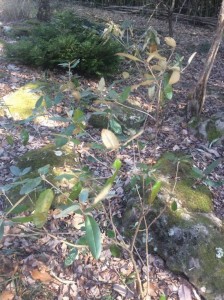 I walk down another level and there’s one of many small Alabama crotons, looking a bit bedraggled, still with a few silver backed orange leaves. These crotons love this part of my garden on a rocky slope with great drainage.
I walk down another level and there’s one of many small Alabama crotons, looking a bit bedraggled, still with a few silver backed orange leaves. These crotons love this part of my garden on a rocky slope with great drainage.
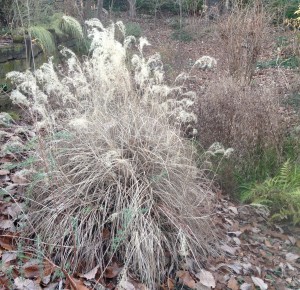
sun shining through a miscanthus…
Farther on, the plumes of a miscanthus show off in the afternoon light. It will need cutting back next month to keep all those seeds from wanting to sprout here and there. My Midwestern soul loves grasses… but not everywhere!
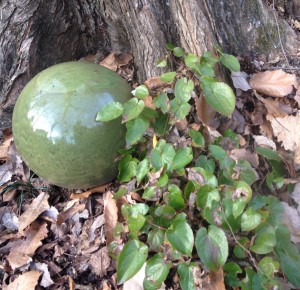
epimedium spreads slowly…
I make my way across the water and toward the rocks where an epimedium resides in the shelter and shade of a large elm. I’ll be trimming it’s tattered winter foliage soon in anticipation of the dainty orange flowers that will appear early spring. There is no procrastinating with epimedium; if I wait too long to clean up those tattered leaves, I risk cutting the delicate stems the flowers arise on.
These small lessons are often learned by doing the wrong thing at least once. I love all the different epimediums I’ve amassed over the years. They are slow growing, tough shade groundcovers – some evergreen, some not, and all very beautiful.
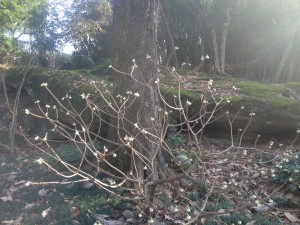
Edgeworthia chrysantha…
One shrub I never prune but let have it’s way, is the Edgeworthia chrysantha, or paper bush. I see the beautiful buds that have been getting larger all fall; soon they’ll begin to open and their incredible scent will fill the garden. It’s a true gem, holding interest in all the seasons, from it’s long lasting pretty buds to fragrant blooms, interesting bark, and big, bold leaves.
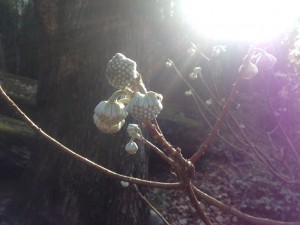
Edgeworthia buds…
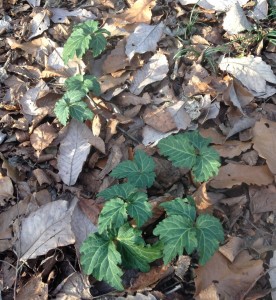
Native cardamine…
I need to end this post soon…Oh, but here, coming up through fallen leaves, is crinkle wort, Cardamine diphylla. I have this native in many spots under the shade of large trees. It will sport pretty white blooms on tall stems in late spring, but it’s the winter when the foliage is at it’s prettiest. By summer it will have retreated below ground once again.
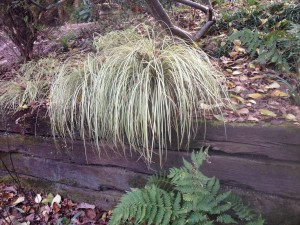
Carex ‘Evergold’
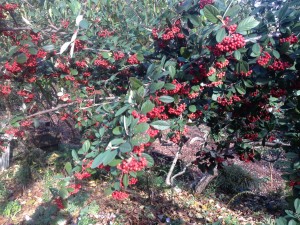
Parney’s clusterberry cotoneaster…the cedar wax wings will devour these berries in another few weeks!
And here’s another favorite, Carex ‘Evergold’, spilling from a planter. Look how it adds it’s lightness under the shade of a Cotoneaster lacteus – ‘Parney’s Clusterberry.
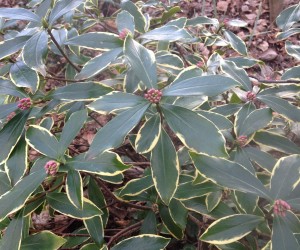
Oh so fragrant…daphne odora
Finally, the daphne odora’s pink buds are getting larger, and soon they’ll open, adding their incredible scent to the whole back garden.
These walks always make me feel relaxed. Sure, I see things that need to be done, but usually I see so much more!
By Kris Blevons
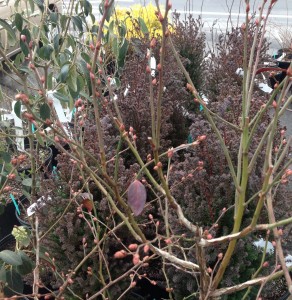
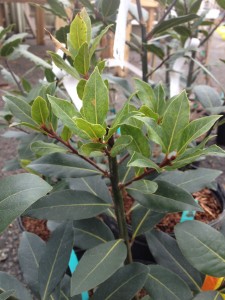
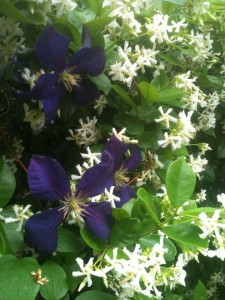
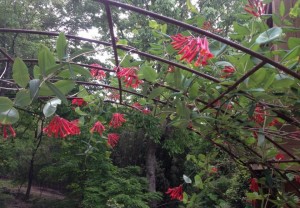

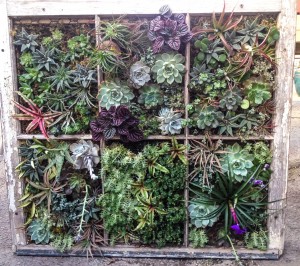
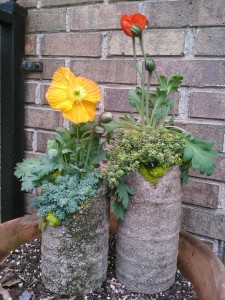
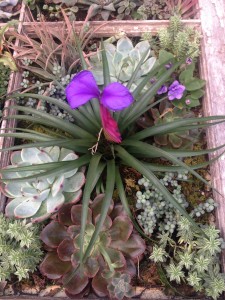
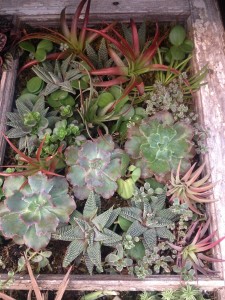
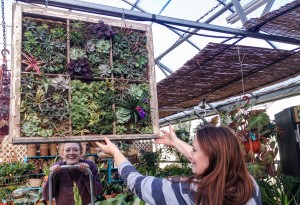
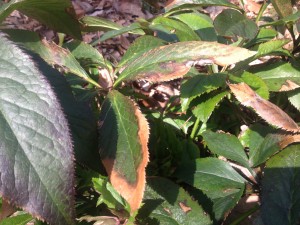
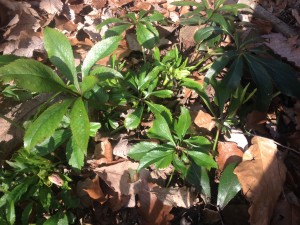

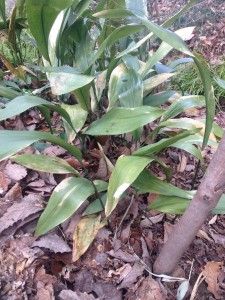
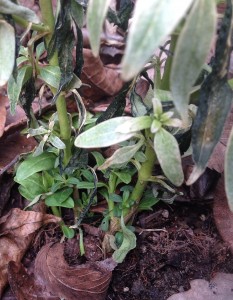

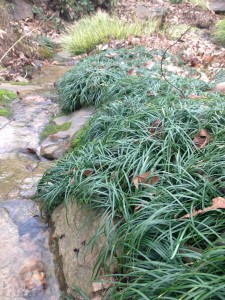
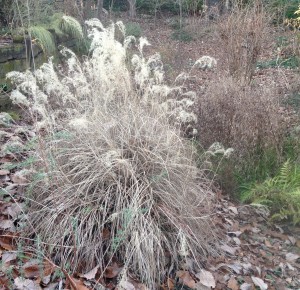
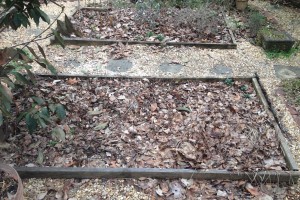
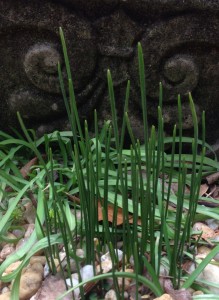
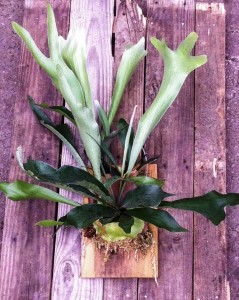
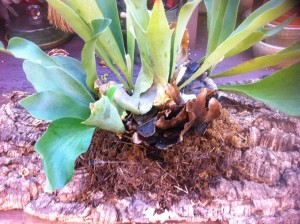
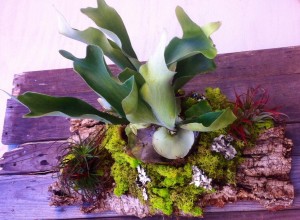
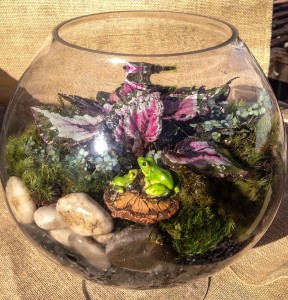
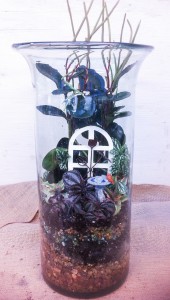
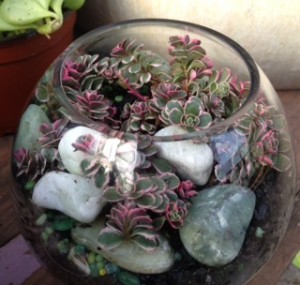
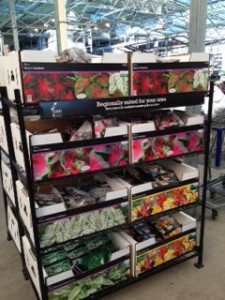 However, a friend recently sent a picture she took (mid January) of warm weather caladium bulbs that had been left outside on display racks for sale in freezing temperatures at one of the “big box” stores in town. Now, caladiums grown in pots are so heat loving we don’t even begin to carry them until late April – and advise people not to plant caladium bulbs in the ground until the soil is thoroughly warmed in May.
However, a friend recently sent a picture she took (mid January) of warm weather caladium bulbs that had been left outside on display racks for sale in freezing temperatures at one of the “big box” stores in town. Now, caladiums grown in pots are so heat loving we don’t even begin to carry them until late April – and advise people not to plant caladium bulbs in the ground until the soil is thoroughly warmed in May.

 Now that January is behind us, we can look forward to spring, knowing it is right around the corner. Until then, we’ve been satisfying our planting urges using late winter offerings from growers. We are determined to come up with something interesting on long winter days in the greenhouse!
Now that January is behind us, we can look forward to spring, knowing it is right around the corner. Until then, we’ve been satisfying our planting urges using late winter offerings from growers. We are determined to come up with something interesting on long winter days in the greenhouse!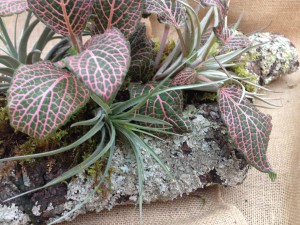
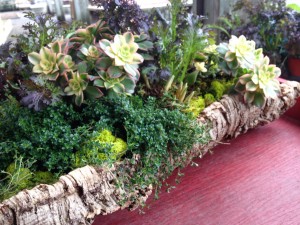
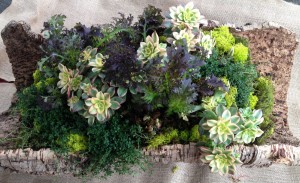 Many of the succulent aeoniums fare better here during the winter months. They seem to dislike our excessive summer humidity (Don’t we all?), and the Aeonium ‘Kiwi’ seemed just right to work into some sort of arrangement. I loved how they looked paired with this frilly dark purple leaf ornamental mustard. If I could just work it into a container that could be moved in and out easily if temperatures dropped below freezing…
Many of the succulent aeoniums fare better here during the winter months. They seem to dislike our excessive summer humidity (Don’t we all?), and the Aeonium ‘Kiwi’ seemed just right to work into some sort of arrangement. I loved how they looked paired with this frilly dark purple leaf ornamental mustard. If I could just work it into a container that could be moved in and out easily if temperatures dropped below freezing…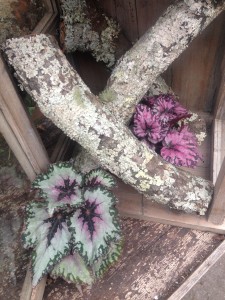
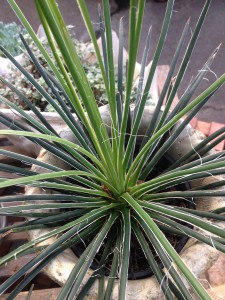
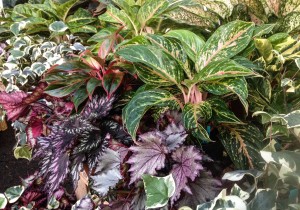
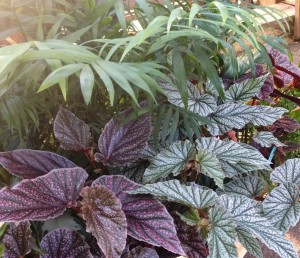
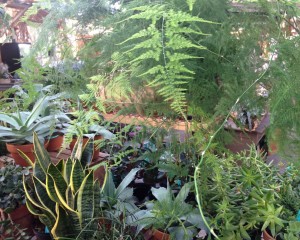
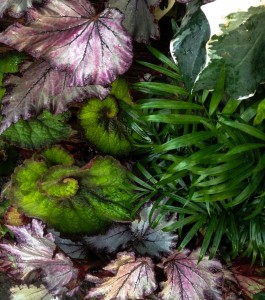

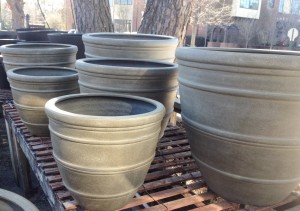
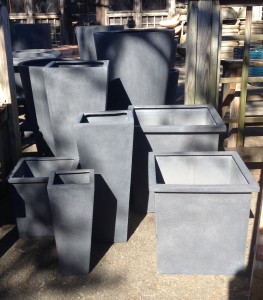
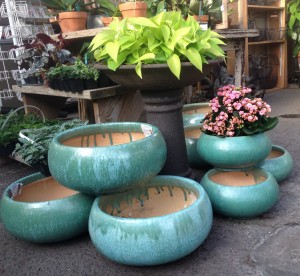


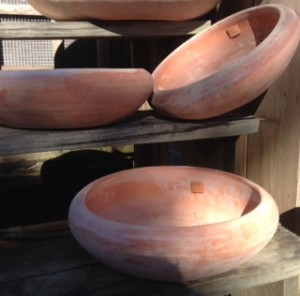
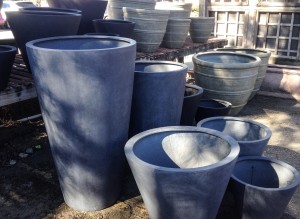
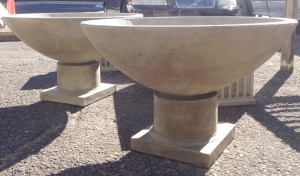
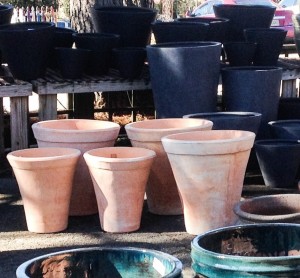
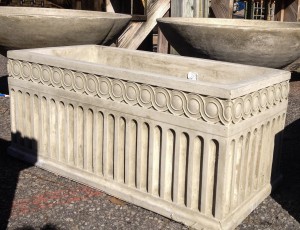
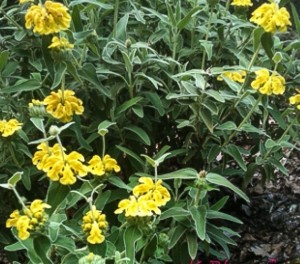
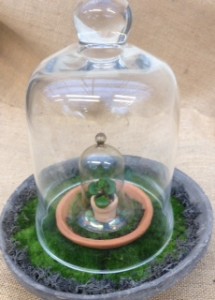 If you haven’t noticed,
If you haven’t noticed, 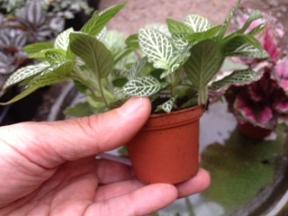
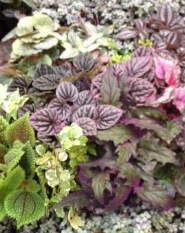
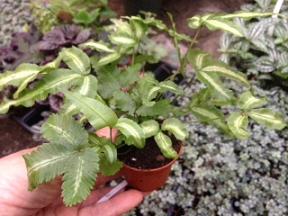
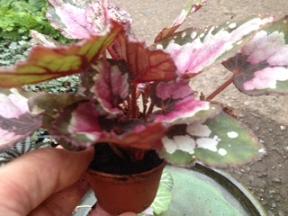
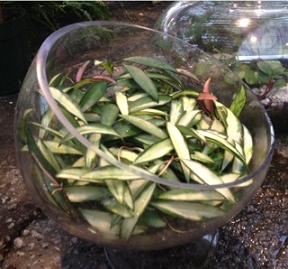
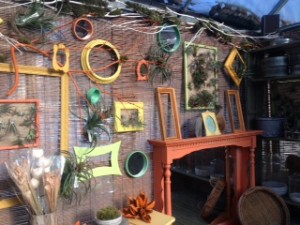
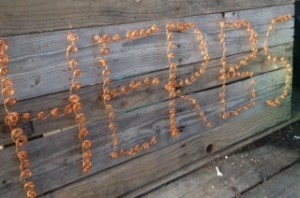
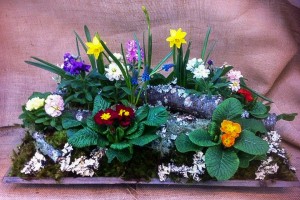
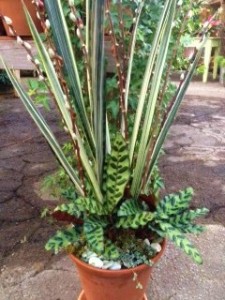
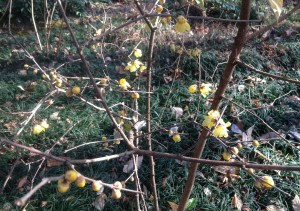
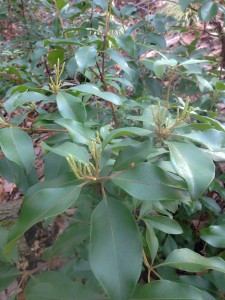

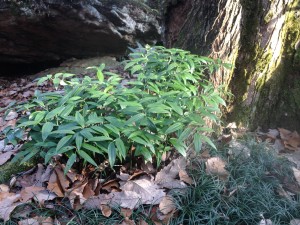
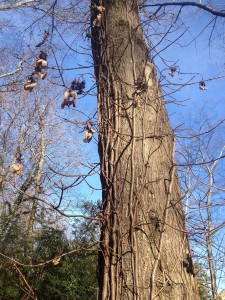
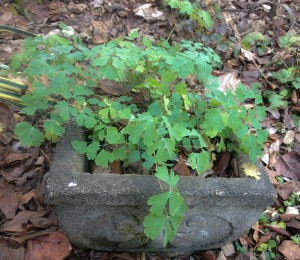
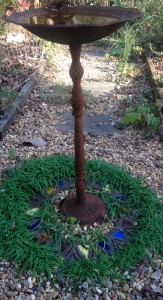
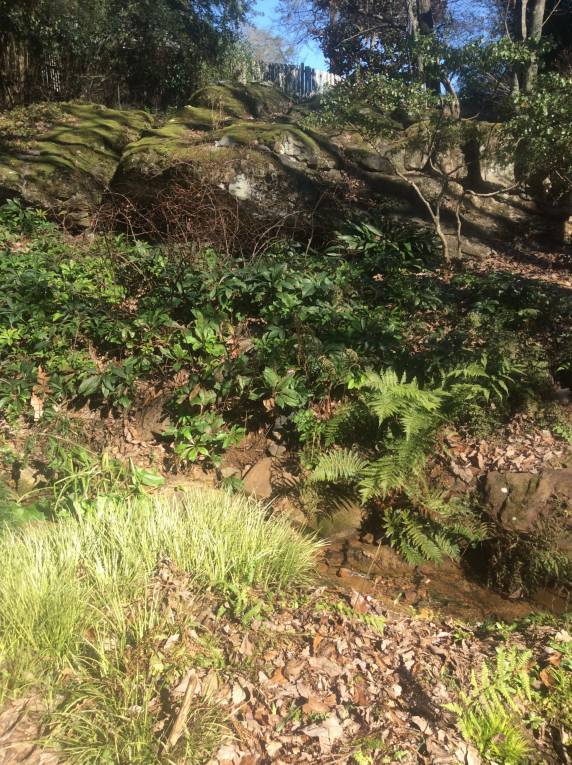
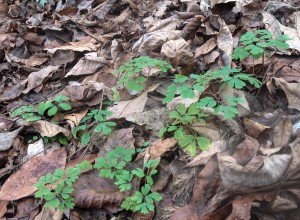


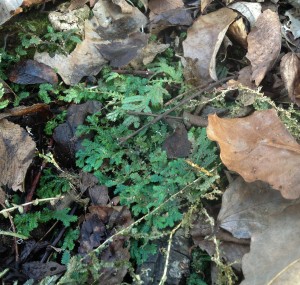

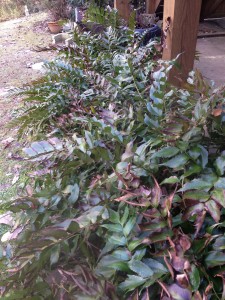
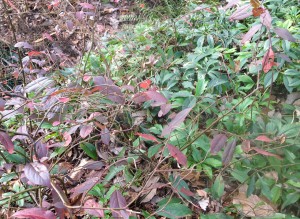 Above the water but spreading down the slope toward it, is a planting of Virginia sweetspire, Itea virginica ‘Henry’s Garnet’ , still holding the garnet colored fall foliage of its name. Underneath this spreading, suckering, shrub is another common evergreen perennial groundcover, the reliable Lenten roses, helleborus orientalis.
Above the water but spreading down the slope toward it, is a planting of Virginia sweetspire, Itea virginica ‘Henry’s Garnet’ , still holding the garnet colored fall foliage of its name. Underneath this spreading, suckering, shrub is another common evergreen perennial groundcover, the reliable Lenten roses, helleborus orientalis.















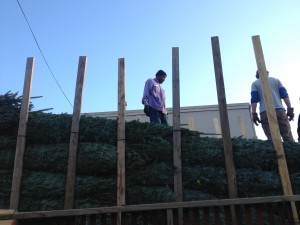
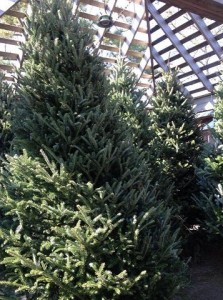
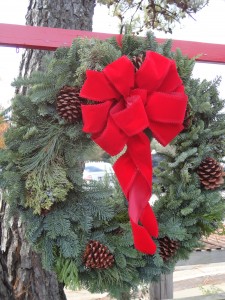
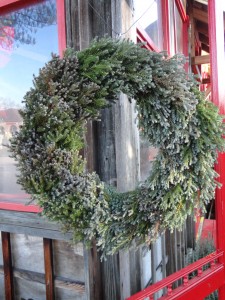
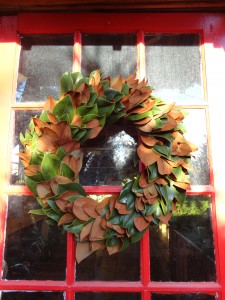
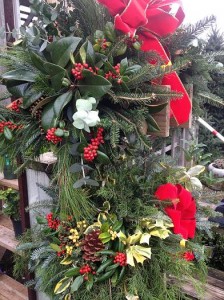
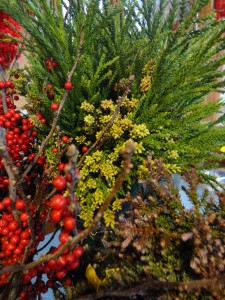
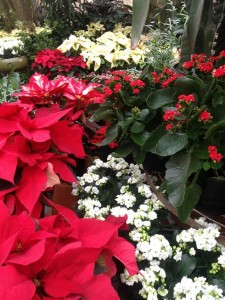 The greenhouse is so beautiful all year round, but it’s especially so in the height of the holiday season. In fact, sometimes there are so many flowers and new plants coming in almost daily that they are literally everywhere – on tables, on the floor around tables, and anywhere we can find a spare space. Never let it be said we don’t have a little something for everyone!
The greenhouse is so beautiful all year round, but it’s especially so in the height of the holiday season. In fact, sometimes there are so many flowers and new plants coming in almost daily that they are literally everywhere – on tables, on the floor around tables, and anywhere we can find a spare space. Never let it be said we don’t have a little something for everyone!